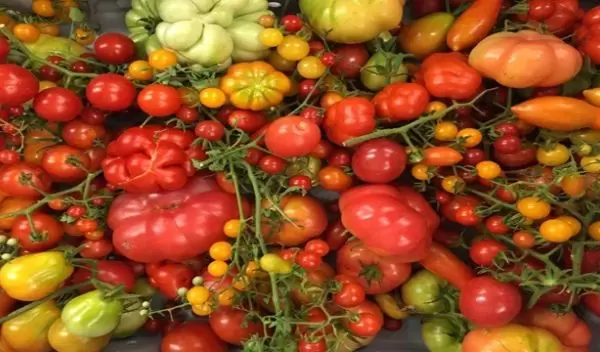
Researchers trace evolution of the domesticated tomato
In a new paper, a team of evolutionary biologists and geneticists led by Ana Caicedo and Hamid Razifard of the University of Massachusetts Amherst report that they have identified missing links in the tomato's evolution from a wild, blueberry-sized fruit in South America to the larger modern tomato of today.
The common cultivated tomato is the world's highest-value and most widely grown vegetable crop, and an important model for studying fruit development, says Caicedo.
The work is part of a larger research effort supported by the National Science Foundation and led by Esther van der Knaap at the University of Georgia. Years of selective breeding have produced the modern tomato, yet the quality and production efficiency of the crop still need improvement. Some beneficial traits were eliminated or hidden during breeding, thus reducing the available genetic diversity in modern tomato genomes.
Caicedo and Razifard say that for many years an oversimplified view of tomato domestication was thought to involve two major transitions: the first from a small, wild tomato to a semi-domesticated intermediate tomato; and the second from an intermediate group to the fully domesticated cultivated tomato. The missing evolutionary link, it turned out, is an intermediate variant between the fully wild and fully domesticated tomato.
Results of the researchers’ genetic studies indicate that the modern cultivated tomato is most closely related to a weed-like tomato group still found in Mexico, rather than to the semi-domesticated intermediate type found in South America. According to Razifard, the findings show that "about 7,000 years ago, the weedy tomatoes may have been re-domesticated into the cultivated tomato."
The study addresses the role of what the researchers call a "historically contentious" and complex intermediate stage of tomato domestication, an essential chapter that should not be overlooked, they say, in the tomato's long journey from wildness to domestication. Details appear in an advanced access edition of the journal Molecular Biology and Evolution.
"Genomic data have revealed the convoluted path of tomato domestication, which followed a natural divergence 80,000 years ago in Ecuador and Peru – to be finished only 7,000 years ago in Mexico," says Gerald Schoenknecht, a program director in NSF's Division of Integrative Organismal Systems.
